Don't worry about whether you can learn. I can seize this opportunity, and you can too. I'm not a god, just an ordinary person. The difference is that others overlook this method. If you can learn this method and pay attention during subsequent trading, you can earn an additional 3 to 10 points of profit daily.
First: For newcomers and veterans entering the crypto world, here are some tips. New digital currency traders should not enter blindly; they first need to understand the basic knowledge of digital currencies.
1. Trading time is unlimited, meaning it is truly a 24/7 trading environment with no market closure. This allows investors to trade at their convenience, making it quite flexible. Of course, this also has a downside, as it requires professional investors to invest a lot of time to monitor price trends and interpret market news.
2. Trading rules allow for spot trading, buying high and selling low to profit from the price difference. One can also trade contracts with leverage, making it relatively flexible. However, to make money, one needs strong technical support.
3. Trading fees: any investment transaction will incur fees, which are collected by the platform. In digital currency trading, fees will also be incurred, and due to the existence of leverage, the fees can be relatively high each time. Different platforms have different trading contract specifications.
4. The T+0 trading model allows for buying and selling at any time without strict limitations on investors' trading time.
5. There are no limits on price fluctuations. Shenghui believes that while this can yield high returns, the risks are equally high and uncontrollable. When market news stimulates activity, there may be sharp rises or falls, and whether one can seize the opportunity to profit at such times depends on their skills.
6. The coins in your wallet can be withdrawn to your own wallet at any time without time limitations and can be operated without fees.
Before officially trading, it is best to grasp the following four points:
1. Learn to analyze news and interpret market information. When significant news emerges, it is usually when the price of digital currency fluctuates the most, potentially leading to sharp rises or falls. Traders need to make judgments, and for beginners, it is advisable to remain observant during major news.
2. Learn to analyze technical aspects, master knowledge of technical indicators. The study of technical indicators requires long-term accumulation. Develop a learning plan to study moving averages, KDJ, Bollinger Bands, candlesticks, volume price, capital flow, etc.
3. Make a good trading plan; do not trade frequently. Frequent trading not only incurs high fees but also affects the trading mindset, leading to loss of rational judgment.
4. Do a good job of risk control. When trading, set stop-loss and take-profit levels to control risk, keeping both profit and risk within an acceptable range. When the price reaches the stop-loss or take-profit point, the system will automatically help us close the position, i.e., sell. Additionally, managing the size of the trading position is crucial; masters control their positions.
I can say that I have used 80% of the market's methods and techniques. I will share with you the most practical one from my experience—the K-line trading method, which has proven effective! A profit of 30% in a month.
I was once a beginner too, rushing into the crypto world, chasing highs and selling lows, only to realize that I had used courage and luck to earn money, which I ultimately lost due to lack of solid skills.
I once followed so-called crypto teachers to trade contracts and learn technical analysis, and at very critical points, I followed them into Bitcoin contract shorts, resulting in almost complete losses! I eventually realized that choosing the wrong guide and not systematically studying spot trading led me down many unnecessary paths. If one’s skills and mindset are not solid, and they do not understand the rules of the crypto world, it is challenging to achieve sustained and stable profits through trading cryptocurrencies.
After going around in circles, I ultimately chose to study the natural trading theory systematically and also learned data analysis in the crypto world, combining it with volume-price relationship analysis. I finally established a three-dimensional trading system that suits me, which is continuously being improved and practiced.
Before the arrival of a bull market, to help more new beginners avoid the mistakes I made and seize the once-in-a-lifetime opportunity of a bull market, I specifically compiled twelve guiding principles for new cryptocurrency traders, hoping to help them understand some trading laws and principles, avoid unnecessary pitfalls, and accelerate achieving stable profits.
Back to the point, I encourage beginners to carefully read, comprehend, and practice the following cryptocurrency trading principles and welcome private messages through Twitter for further discussion.
01 Only engage in spot trading, do not engage in contracts.
Spot trading is a steady stream; contract liquidation can lead to total loss. Beginners entering the crypto world often desire to get rich overnight, leading to an impatient mindset, lacking professional skills and guidance. Seeing others using leverage for contracts to make quick money, they might also engage in high-leverage contract trading, resulting in quick profits and losses. The end result is usually the total loss of capital, even leading to bankruptcy, and a severe loss of confidence. Some financial experts have faced heavy debts after liquidation due to high leverage in contracts, and news of suicides after such failures is not uncommon. Contracts are a zero-sum game; they require more professional skills and a good mindset compared to spot trading. If beginners cannot even handle spot trading well, they cannot succeed in the intense competition of contract trading. They must stay away from contract trading and focus on spot trading.
02 Principle of investing spare money; do not borrow to trade cryptocurrencies.
Trading cryptocurrencies involves 30% technique and 70% mindset! For beginners, if they use their spare money to trade cryptocurrencies, and suffer short-term losses or are stuck, maintaining a calm mindset will not affect subsequent trading opportunities. Ultimately, they may witness the clouds parting and grasp good trading opportunities. Conversely, if one uses borrowed funds to trade, they will be highly nervous and fearful, easily becoming impulsive. With such a poor mindset, it is very difficult to make sustained profits. Even if they occasionally encounter good coins and profits, they are likely to face losses in the end.
03 The principle of following the larger trend and countering the smaller trend.
Follow the larger trend, which addresses the direction of trading; counter the smaller trend, which addresses the entry points.
We all know that swimming along the flow is easier and faster, while swimming against it is very tiring and may even lead to regression. Trading cryptocurrencies is like swimming; one needs to go with the trend. When the medium to long-term trend of the market is upward, buying mainstream coins during dips will yield profits, and even chasing highs can also be profitable. Conversely, if the medium to long-term trend is downward, even buying during dips is counter-trend trading. If one cannot exit in time, they will ultimately face heavy losses or be stuck.
Therefore, when trading cryptocurrencies, one must follow the medium to long-term trend direction of the market. When the market is in a bullish uptrend, one should dare to invest heavily; when the market is in a bearish downtrend, one should learn to rest with no positions. This is the principle of following the larger trend. So, what is the principle of countering small trends? When the larger trend is upward, one should have the courage to find a good entry point during the short-term decline of a coin.
As shown in the K-line chart of Bitcoin at the weekly level, there are several good entry points on the rising trend line. In the future, if Bitcoin experiences a downturn and touches the rising trend line at points 32,000 and 36,500, could these be good buying points? Time will reveal the answer.
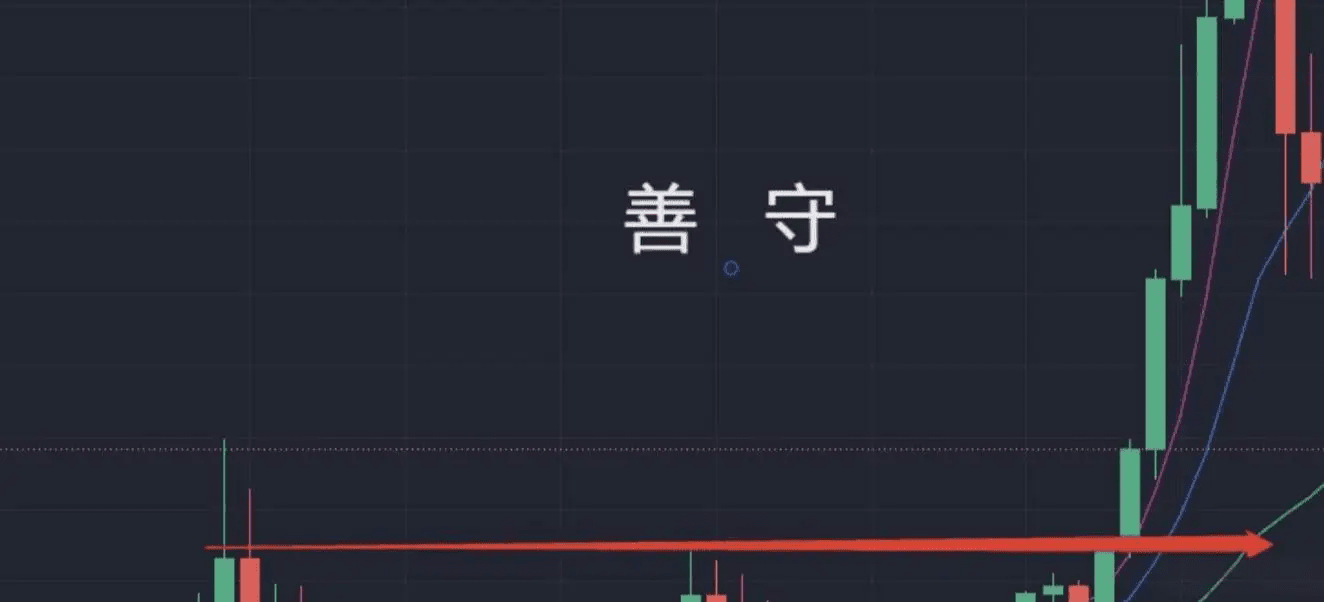
Regarding the five best entry points for spot trading, please pay attention to the second part of the guide for beginners in cryptocurrency trading.
04 Right-side entry and left-side exit principle.
Entering and buying cryptocurrencies can be divided into left-side and right-side entries, and profit-taking can also be divided into left-side and right-side exits.
As shown in the diagram below, during the price decline, choose left-side entry to buy in batches at points A, B, and C. You may buy at the midpoint of the price or even at the lowest point. The left-side entry method is relatively aggressive, with higher risks, making it unsuitable for beginners.
Point D is the entry point for buying after the price breaks above the neckline of the W-bottom reversal structure, confirming the right-side entry method. Although it does not buy at the lowest price, it is relatively safe and certain, suitable for beginners.
After buying coins using the left-side entry method, as the price rises, one should sell in batches: small increases lead to small sales, and large increases lead to large sales to lock in profits. As illustrated, selling at point E is part of the left-side selling method; selling at point F after the price breaks below the upward trendline is part of the right-side selling method. Beginners should prioritize the left-side selling method for more stability and maximized profits.
The right-side buying and left-side selling methods may not consume the entire fish, but they can allow you to enjoy the most delicious parts, turning small victories into large ones.
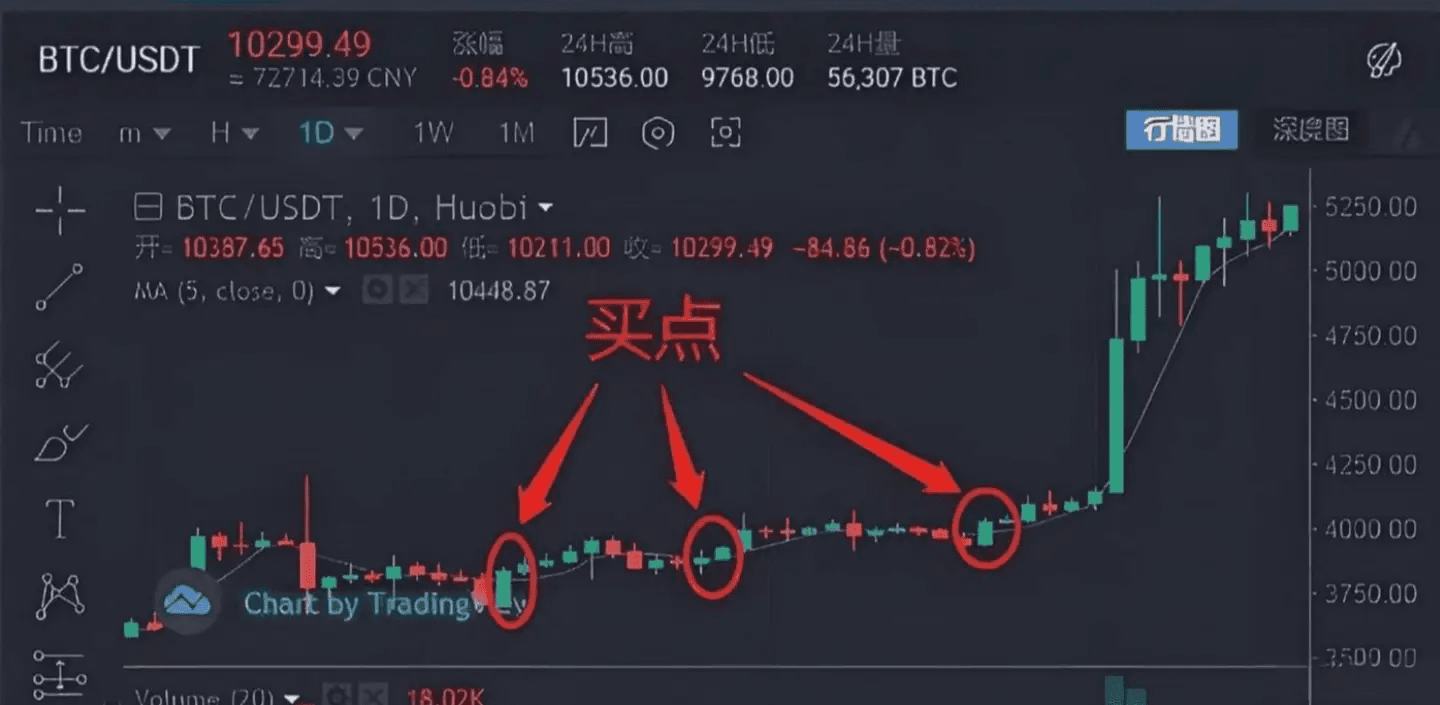
05 Principle of trading new coins instead of old ones.
The cryptocurrencies in exchanges are divided into new coins, next new coins, and old coins. Coins that have just been listed are called new coins; those listed for a few months are next new coins; those listed for more than half a year are old coins. Traders with larger capital prioritize mainstream coins, such as Bitcoin, Ethereum, and SOL. Traders with smaller capital, including beginners, should focus on new coins and next new coins for greater profit opportunities.
Why trade new coins instead of old ones? This is because old coins, unless they have new technological breakthroughs or narratives driving them, will not present new speculation opportunities. Investors are already well aware of these coins, and there are no fresh stories to tell. Moreover, they have already been traded multiple times, and the holding positions are quite severe. It is hard for major institutions to lift them up, making it difficult to attract market attention.
New and next new coins have new technologies, new tracks, new narratives, and new token models that easily attract investors' attention. Once new and next new coins complete their bottoming and break through upwards, the holding positions are fewer, and it is smoother for major institutions to lift them. Once they break through the historical highs, there is ample room for imagination, leading to larger price increases, greater profit opportunities, and profit margins.
For example, the TIA next new coin illustrated below features new technology and narrative. After being listed, it consolidated around 2.3 USDT for several days before breaking through the previous high of 3 USDT and skyrocketing by up to 7.5 times.
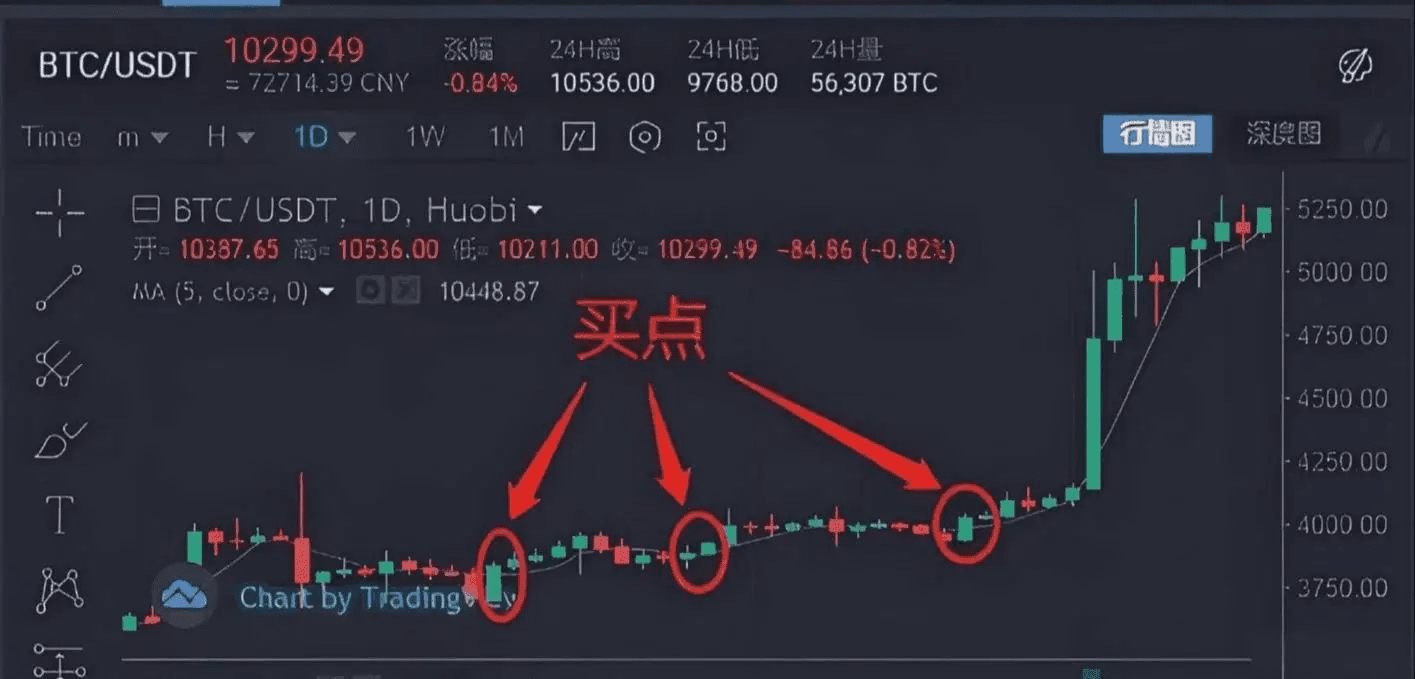
Another typical next new coin is ORDI, which is a new narrative in the Bitcoin ecosystem: the inscription track. After being listed on Binance, it has continuously risen, reaching a peak of 92 USD, increasing by more than ten times.
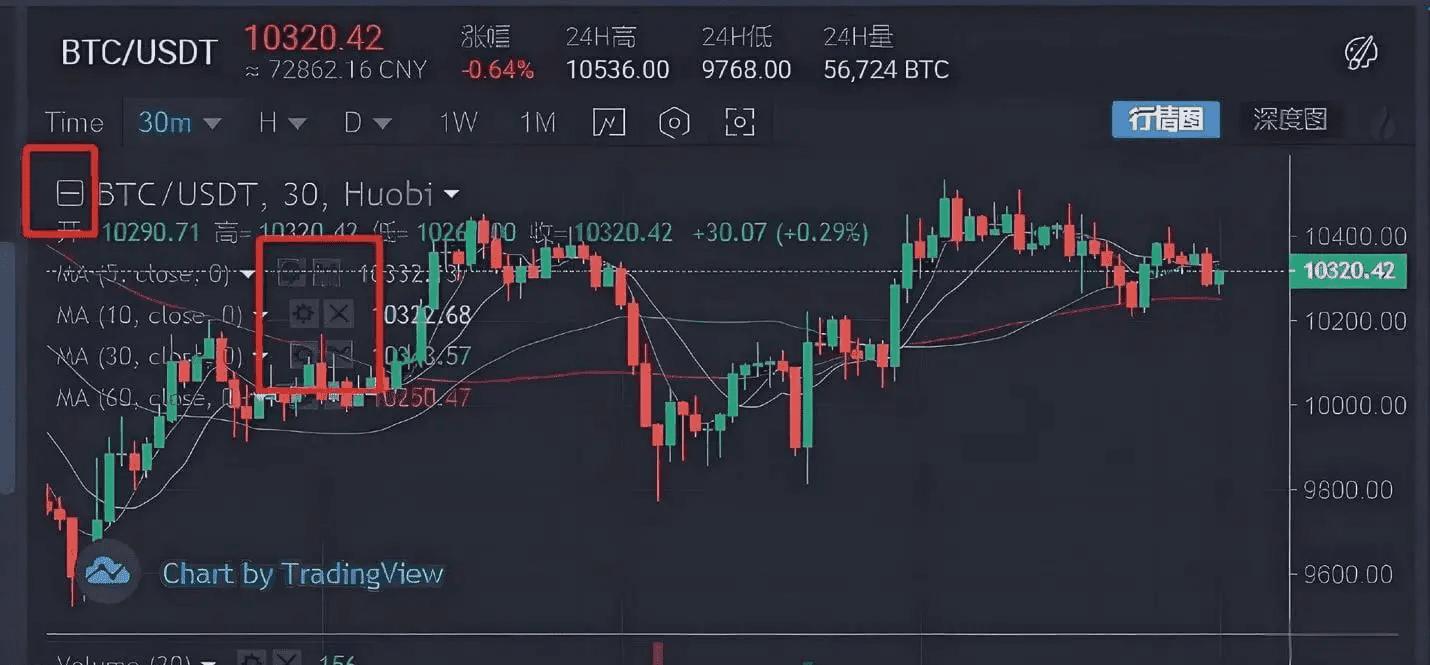
06 Principles for trading new coins in six stages.
Based on my long-term observation of new coins being listed on exchanges, I have summarized the six-stage operational model that new coins generally follow.
1) In the days after listing, there may be a spike followed by a drop.
2) Continuous declines and bottoming out are often overlooked.
3) Continuous bottoming for several days, then starting to warm up.
4) Gradual rise attracts attention.
5) Cryptocurrency prices repeatedly reach new highs, and the market goes wild.
6) Institutions distribute chips, resulting in a mess.
Some beginners choose to chase and buy high immediately after a new coin is listed on an exchange. This approach is prone to being stuck and carries a high risk of loss. Buying when the new coin has completed the third stage of consolidation and successfully breaks out is a more certain and safer right-side entry method, suitable for beginners and conservative traders. I personally choose to enter on the right side. We cite the case of the SEI new coin to demonstrate the right-side buying method in the third stage.
The SEI next new coin spiked and then dipped on its first day on the exchange, followed by a steady decline and bottoming out. It took 98 days to form a relatively perfect arc bottom reversal structure. We can enter the market to buy when SEI coin breaks through the neckline price point A of the arc bottom structure. Although we did not buy at the lowest point, we chose the right-side entry in the third stage, achieving certainty and safety.
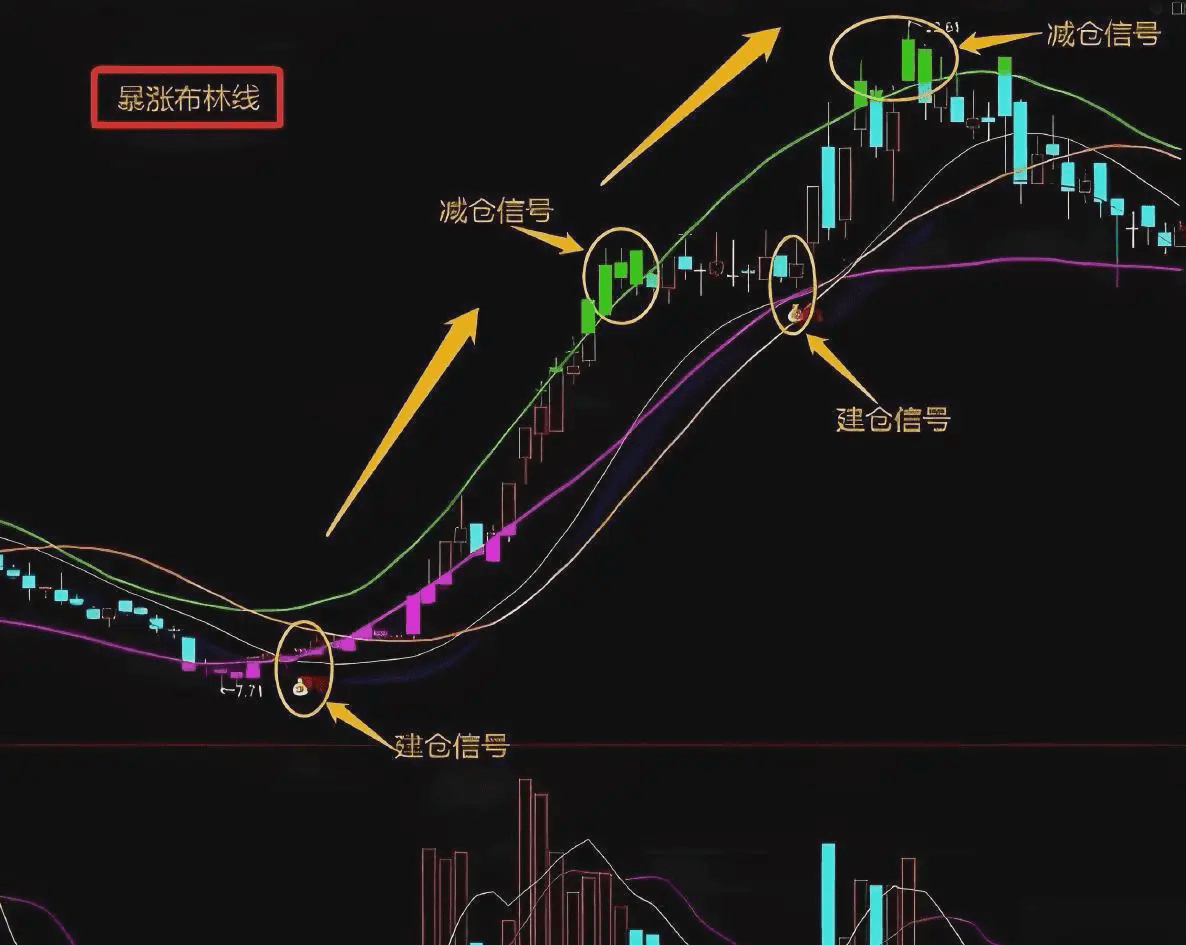
Let’s review a case of the right-side buying method for a next new coin: TIA coin, which was also a coin I previously bought. After being listed on the exchange, it saw a spike followed by a drop, consolidating sideways for 8 days before breaking through the historical high price of 3 USDT. It also broke out of the small sideways structure, at which point I decisively chose to chase higher and buy. Although I did not buy at the bottom near 2 USDT, I bought at a point of certainty and safety. After breaking through the historical high, TIA coin continued to rise, and the profits gained were significant.
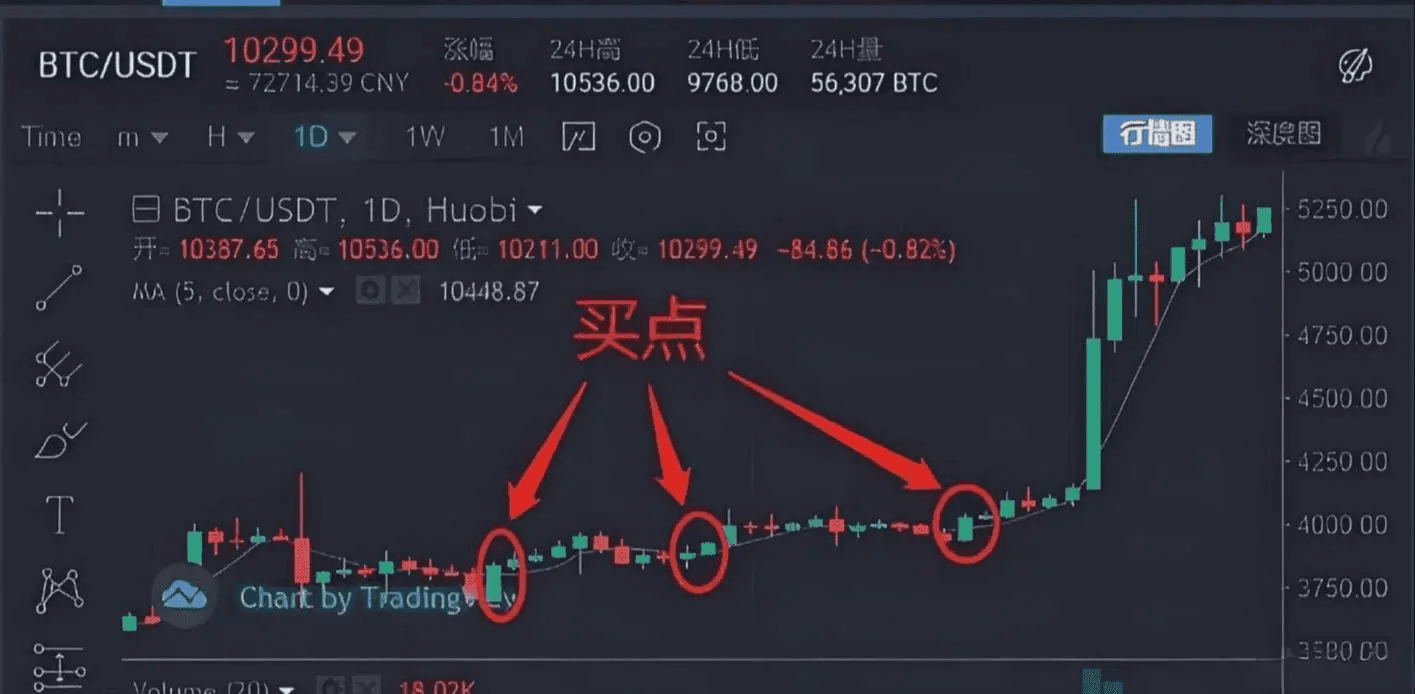
The above content is from the first part of the guide principles for beginners in cryptocurrency trading. I will continue to work hard on the second part, which will be published on Twitter, as outlined below.
Guide principles for beginners in cryptocurrency trading (Part Two) outline:
7. Principle of entering trades with half positions.
8. Five major principles for entry points in buying.
9. Principle of setting stop-losses to protect capital.
10. Principle of avoiding frequent and impulsive trading.
11. Principle of avoiding short-term trading in favor of swing trading.
12. Adhere to the principle of continuous learning and integrating into excellent teams.
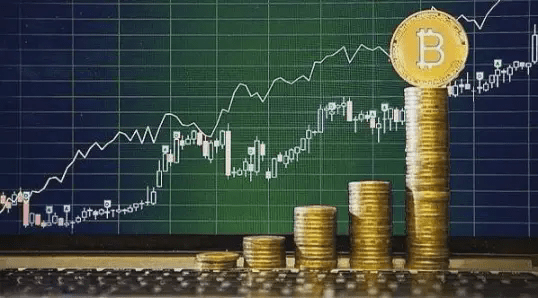
After many years in the crypto world, these ten iron laws are posted on my computer. I review them before entering the market each day, allowing me to survive round after round of significant declines. Today, I share them with friends in hopes they find inspiration.
1. Never chase high prices to buy coins; always maintain the mindset that it can rise as much as it wants, treating this coin as if it doesn't exist.
2. There are only two types of coins: those bought at good points are good coins; otherwise, they are trash. The coins bought at higher-level buy points are the best-performing coins. Patiently wait for these coins to become truly high-performing coins; this is the true mindset.
3. In fact, the most important thing in trading cryptocurrencies is the mindset. Many people know very well that it is not a good buying point, but they can't resist the urge to buy, which is a mindset issue. If this is not resolved, any theory is useless.
4. Maintain a stable mindset; do not have any emotional attachment to any cryptocurrency or price point, only pay attention to market signals. One should have emotional attachment to buying and selling points. If the technical skills are good and the capital is large, one can operate on a weekly or monthly basis, building positions in batches and diversifying. Then, there is no problem of timing being too late.
5. The reasons for mistakes are always unrelated to the market. To find the reason, one can only look within themselves. Every mistake must be summarized immediately.
6. The psychology of being eager to make quick money is a big taboo for us participants in trading cryptocurrencies. If one cannot control their own greed and desires, they cannot succeed in the market for long. There are two forms of emptiness: when one holds coins, their thinking is controlled by the bulls; conversely, they become slaves to the bears. Market emotions accumulate and are guided from this state. Those who cannot escape this will forever remain false market participants.
7. Trading cryptocurrencies tests long-term profitability, not the ability to explode once. The key is a long-term effective trading strategy. When buying, consider various scenarios, hold firmly, and sell decisively to gradually improve. You are trading cryptocurrencies, not the coins trading you; start with yourself.
8. The virtual currency market only rewards those who are patient; any good coin needs time to grow. Constantly switching to new coins will definitely lead to small funds and small profits. Focus on one thing; those who keep running around will not earn big money.
9. Dance to the rhythm of the market. As long as you follow the market's rhythm, you can navigate effortlessly. Rhythm is always the market's rhythm. A market participant without a sense of rhythm will always suffer. Set aside your greed and fear, and listen to the market's rhythm. If you can align with the rhythm, no one can stop you. The market has rhythm; grasp the current rhythm, and no one can defeat you.
10. Those who play with capital must remember that patience is the greatest power. As long as you have a good mindset and skills, patiently waiting, holding, and observing is essential. This can overcome everything.
The crypto world, filled with opportunities and challenges, attracts countless individuals dreaming of wealth. However, beneath this seemingly golden landscape lie numerous hidden reefs and whirlpools.
From unique trading rules to astonishing price fluctuations; from complex and changing regulatory policies to ever-evolving scams, each link tests the wisdom and courage of investors. Entering the crypto world is like stepping onto a battlefield without smoke, and only by knowing oneself and the opponent can one avoid defeat.
I hope that every friend entering the crypto world with dreams can maintain a clear mind in this unpredictable field, invest rationally, arm themselves with knowledge, and use wisdom to avoid risks. Remember, the accumulation of wealth is a long marathon, not a short sprint. I wish everyone can protect their assets in the wave of the crypto world and achieve their own success.
If you want to seize this bull market, learning and acting quickly will not suffice; it is best to have someone guide you to enter rapidly.
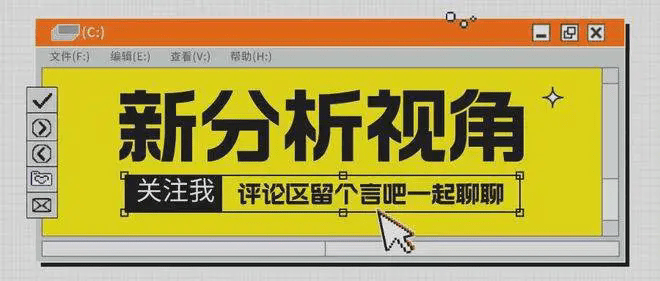
Strong recovery, assets doubled! Follow the lead and strategically position yourself to easily capture significant profits.
Stay tuned: A2Z YALA



